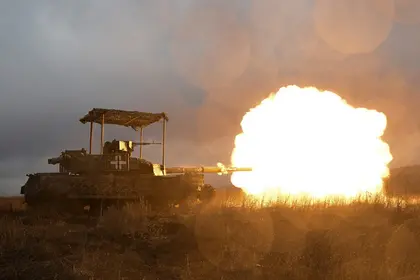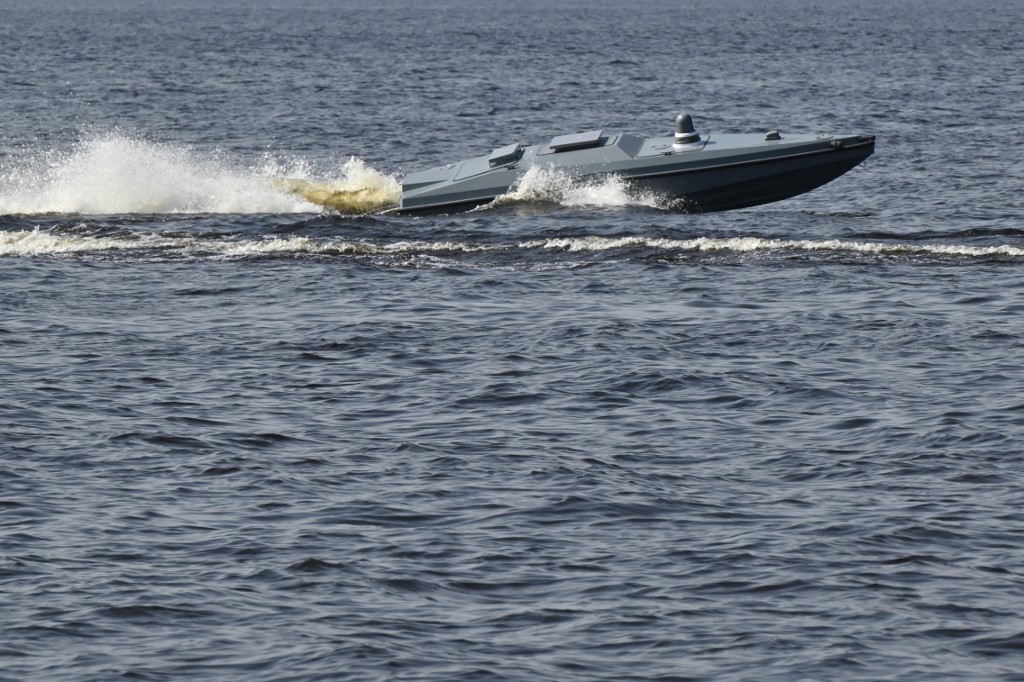In 2024, considering the absence of US military aid, Ukraine might have difficulty holding back the Russian offensive. The US has played a central role in providing different types of aid (e.g., financial, security assistance, weapons, and humanitarian), amounting to around $75 billion. It has provided approximately half of the foreign military aid to Ukraine, or $47 billion, ensuring that Ukraine could survive Russian aggression since February 2022.
To fully replace it, EU countries would have to double the present pace of arms assistance, which seems impossible, considering the challenging economic and political climate. Moreover, since the fall, EU political leaders have issued statements about the inability to replace US military assistance.
Due to the lack of funding, Ukraine is already experiencing severe ammunition shortages, which led to the fall of Avdiivka in the eastern Donbas. In the event Ukraine doesn’t secure more weaponry, it will lose more territories this year.
Moreover, Ukraine needs at least half a million newly mobilized recruits to defend the line of contact with the Russian army, which has a total length of about 3,500 kilometers. Ukrainian authorities would need at least 722 billion hryvnias ($18.8 billion) for newly mobilized training and purchase of additional military equipment. Mobilizing such a high number of people could undermine the Ukrainian economy. In turn, Russia has a manpower advantage, with Ukrainian often outnumbered one to seven.

‘One of Moscow’s Biggest Defeats’ – Ukraine at War Update for Jan 2
Additionally, while Zelensky ordered a strengthening of an extensive network of fortifications to hold back Russian troops, the progress has been far from satisfactory, and often, even the most basic trench lines are not properly prepared. This creates an additional risk for slowing down Russian troops.
This war remains a fight for survival for the Ukrainian people.
Why Ukraine needs Western support more than ever
It is critical to ensure that US aid resumes, with EU countries increasing their military assistance. This way, Ukraine can boost its military, strengthen defense lines, and restore its depleted ammunition to withstand the Russian offensive this year. This is the most realistic goal as Ukraine has no objective possibility of a turnaround in the war this year.
Drones have helped Ukrainian troops conduct effective surveillance, halting Russian attacks, backing up counterattacks, and saving soldiers’ lives. In February 2024, a coalition of Western allies pledged to deliver one million drones to Ukraine this year. This situation allows the Ukrainian army to compensate partially for ammunition shortages.
Western allies should invest in the joint production of drones with attack systems in Ukraine to minimize reliance on Western drone supplies. In early February 2024, President Zelensky ordered the creation of a separate branch of Ukraine’s armed forces devoted to drones. The Ukrainian government aims to allocate more than $1 billion to upgrade its drone-fighting capabilities while ramping up domestic production. These steps are crucial for strengthening Ukrainian drone capabilities as Russia announced its plans to invest $1 billion in drone development and increased its domestic production of battle drones by 33 percent in 2023 compared to the previous year 2022.
Moreover, Russia has a considerable advantage in electronic warfare technology that jams and diverts drones and guided missiles and had invested heavily in these capabilities before the invasion. Ukraine has only recently started establishing the production of electronic warfare systems. Western allies should provide Ukraine with additional capabilities to suppress the satellite guidance system of Russia’s guided drones and missiles.
Russian air superiority also makes it hard for Ukraine to conduct primary offensive operations. This was one of the major factors leading to the failure of the Ukrainian counteroffensive in 2023. It is crucial to speed up the delivery of F-16 jets to compensate for Ukraine’s loss of half of its Su-27 heavy fighters and MiG-29 fighters since the start of a Russian invasion. F-16s could help the Ukrainian army protect its airspace while easing the pressure on ground-based air defenses.
Furthermore, Ukraine requires long-range weapons to target Russia’s fuel and munition stockpiles behind the frontlines to neutralize Russian offensive measures. While France and the UK have already provided SCALP and Storm Shadow missiles, the German Bundestag voted against delivering Taurus cruise missiles on Feb. 22, and the US has not proceeded with supplying long-range ATACMS ballistic missiles which Ukraine had asked for since 2022.
Russia’s artillery superiority poses another critical challenge. While Ukraine’s artillery matched Russian capabilities at the start of the Ukrainian counteroffensive, Russians now have a fivefold advantage. This allows Russians to suppress Ukrainian defense lines and conduct offensive operations effectively. While Western partners aim to triple their production of artillery rounds, it still wouldn’t cover minimal Ukrainian military needs. The EU and US should step up cooperation with Ukroboronprom, the Ukrainian state-owned military manufacturer, on its artillery shells production enlargement program to ensure Ukraine builds up self-sufficiency in this realm.
Finally, Ukraine needs urgent air defense aid as Russia continues to launch bombing campaigns targeting energy, military, and civilian objects to exhaust limited Ukrainian missile defense capabilities. The Kremlin boosted the domestic output of missiles and introduced new tactics such as camouflaging drones against the night sky and putting the engine exhausts on some drones from the rear to the front to confuse anti-air batteries utilizing thermal sights.
How the Kremlin ramps up its military production
In November 2023, the Russian President approved a record budget increase of around 30 percent for military spending in 2024, reaching approximately $409 billion. This indicates the Russian regime’s willingness to continue war activities while replenishing its depleted military arsenals and ensuring mobilization efforts.
Russia has officially increased military spending from 3.9 percent of GDP in 2023 to 6 percent in 2024, and it will be responsible for around a third of all Russian budget spending. The Kremlin is turning civilian facilities into arms factories producing weapons such as tanks, drones, artillery shells, and other equipment. Since February 2022, the production of tanks has increased 5.6-fold, armored personnel carriers 3.5-fold, artillery ammunition 17.5-fold, infantry fighting vehicles 3.6-fold, and unmanned aerial vehicles 16.8-fold. Many Western companies have not been able to keep up with Russian military production despite solid demand for weapons and military equipment due to labor shortages, increasing costs, and supply chain disruptions that have deteriorated because Russia invaded Ukraine.
Simultaneously, Russia has secured deals with countries like North Korea and Iran. Russians got hold of ballistic missiles and one million artillery shells from North Korea, and received hundreds of Iranian drones.
Underestimating the Kremlin’s ambitions in the region would be a tragic mistake.
Fighting for survival remains the only option for Ukraine in 2024
This war remains a fight for survival for the Ukrainian people. Ukrainian leadership says they won’t consider any negotiations with Russians until the Kremlin’s troops are fully withdrawn from Ukrainian territory. Even if Ukraine makes some territorial concessions to Russia and makes a peace deal, Russia will use this time to rearm and relaunch new attacks on Ukraine.
The Kremlin doesn’t see Ukraine as a sovereign nation and will continue its military efforts to take over new territories in the south and east of Ukraine in the short-term perspective. Its minimal objective is to annex the entirety of the Kherson, Zaporizhzhia, Luhansk, and Donetsk regions (areas they still only partially control) in compliance with the “accession treaties” signed in September 2022.
If things go well for the Kremlin, it will aim to dismantle the Ukrainian state completely and put a pro-Russian puppet in power with complete control over Ukraine. Ukrainian sovereignty is only conditional on partnership with Russia. Since the USSR collapsed, Russian political elites have considered Ukraine to be a direct threat to Russia’s standing as a global power. As former US national security advisor Zbigniew Brzezisnki wrote once in a 1994 article for Foreign Affairs: “Without Ukraine, Russia ceases to be an empire.”
Any further delay in the US aid will benefit Russia in this war of attrition. Ukraine is running out of ammunition on the frontlines and must use more manpower to plug increasing holes on the frontline, which Russia can potentially break, considering its superiority in manpower and weaponry.
Thus, Western allies must renew and increase military, financial, security, and other types of aid to Ukraine to help it survive and prevail in the battlefield. If Ukraine falls, the Kremlin will present a threat to other countries in Europe, particularly Poland and the Baltic states. Underestimating the Kremlin’s ambitions in the region would be a tragic mistake. It is time to prepare for all possible escalation scenarios by ramping up military production and strengthening defense capabilities among NATO member states while increasing support for Ukraine.
The views expressed are the author’s and not necessarily those of Kyiv Post.
You can also highlight the text and press Ctrl + Enter






